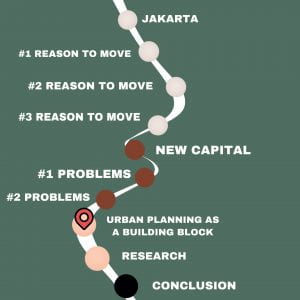Hi Friends! A few weeks ago, me, Li Zhe, Si Ying and Junyu went to the city gallery in URA. We learnt so many things about urban planning in Singapore. From this experience, I could understand some urban planning strategies that are applicable in the context of Indonesia.

From this field trip, we learnt that the 5 key aspects of urban planning in Singapore: transport, green spaces, water, waste, and energy. It is amazing how despite the land constraint, they could exploit every space possible to implement these aspects by going underground (for pipes, sewage system, etc), doubling up (by building high rises), and grow bigger (reclamation).

One particular thing that amazes me is the complex underground system where they store all the district cooling systems, common services tunnels, among other things. I am particularly interested in how they work with the soil structure and how the soil interacted with the structures built. I was wondering too if Indonesia implements this concept in the new capital, will this be a success considering the soil type in Kalimantan.
After asking Ru Yi, our tour guide in URA, she mentioned how it requires years and years of extensive research before being able to determine the proper infrastructure that could be built in the context of Singapore. This got me thinking that even the smallest details and aspects like this requires a decade long research. I personally feel that the Indonesian government’s hope to relocate the capital by 2024 is too rushed and ambitious

Nowadays, there is also a greater emphasis on urban mobility by resting a wide range of transport facilities and going car-lite. Interconnectedness and mobility is an integral part that shapes a city. Comparing this to Jakarta, I feel like Jakarta is lagging behind in terms of their public infrastructure services and management, which is even aggravated during this pandemic. Perhaps, in the new capital, transport and mobility could be prioritised.


Moreover, there is also the need to create an identity of the city. For example, as can be seen from Seoul, it is interesting how the government utilise the river as a recreational space and purposely plan spaces for people, not cars. This encourages the locals to drive less and enjoy the scenery in the busy city. In the context of Hamburg, it also created a green network with bike paths and pedestrian walks that encourages people to cycle or walk around the town. These concepts might be applicable in the context of Kalimantan whereby it is already located near the lush forest and between 2 rivers. This could be the extension of what Kalimantan already has and utilise these spaces to create places that exude Kalimantan’s identity.
In my opinion, however, the government should be careful in creating developments near these locations as these are vulnerable sites, as mentioned in my previous blog post. They should enforce stricter rules and create conservation efforts so that it would be a sustainable city.
I hope that through the case studies from other urban cities in the world, the Indonesian government could understand how crucial is urban planning as a building block for a city. By understanding that, I hope they really plan carefully before they really relocate the capital to Kalimantan.